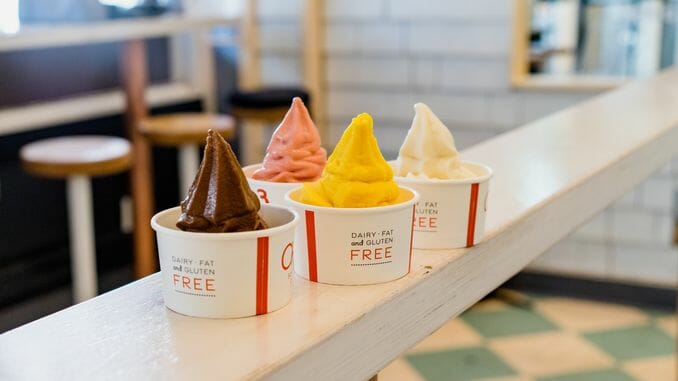Nostalgia for the Mid-2010s Froyo Shop in the Midst of the Indie Sleaze Revival
Photo by Dan Gold/Unsplash
Talk of an indie sleaze revival has been circulating the internet. For all those who touch grass more than I do, “indie sleaze” basically refers to what we Millennials thought of as the “hipster” culture of the mid-2000s to early 2010s. Far from the slicked-back bun, green-smoothie vibe of the Instagram era, indie sleaze was notable for its celebration of wild nightlife, oversized plaid shirts and tights under shorts and overexposed portrait photography.
I, for one, desperately wanted to be like the girls in the American Apparel ads I saw on Tumblr, but there was a problem: I didn’t live in New York, LA or anywhere else this scene was proliferating. I was still in high school in suburban Georgia, and try as I might to perfect my winged liner and pick out the ideal pair of high-waisted shorts at the local Goodwill, the effect kind of fell flat when there was nowhere to hang out except a Chick-Fil-A and a Kroger parking lot.
There was one other place, though: a small frozen yogurt shop about a mile away from my high school. After classes ended, my friends and I would meet and order massive swirls of frozen yogurt and then top them with a combination of an absolutely astonishing number of options: candy, cookies, fruit, sauces—it was always overdone, and the desserts probably would’ve been better if we’d showed any restraint. But in the midst of the financial crisis, the froyo shop seemed like one of the few places where restraint wasn’t required.
It turns out that I’m not the only who feels a sense of nostalgia for these days. Just like the internet has grasped onto the indie sleaze revival, it seems like people on Twitter are also hungering for a separate if simultaneous froyo movement that became prevalent at the same time hipsters took center stage and Creepers came into fashion. On April 24, Maya Kosoff took to Twitter and wrote, “i am ready and waiting for the eventual renaissance of the early 2010s frozen yogurt shop.” A few days later, Maris Kreizman tweeted, “The world is ready for a frozen yogurt revival.” Countless others have mentioned that they, too, miss the simpler days of the froyo craze.
To me, the frozen yogurt zeitgeist, like the indie sleaze scene, feels like a reaction to the early years of Obama’s presidency: The economy may have crashed, but there was still a sense of sparkling optimism in the air. The froyo shop reflected this period perfectly. Taking a trip to get froyo was a relatively affordable luxury that felt decadent and abundant. The shops were uniformly colorful, bright, cheerful. The teenagers working behind the counter were young and fresh-faced. There were moms with young children and high schoolers on first dates happily sharing paper cups full of the frozen dessert. This was the early 2010s I experienced in suburban Georgia.
-

-

-

-

-

-

-

-

-

-

-

-

-

-

-

-

-

-

-

-

-

-

-

-

-

-

-

-

-

-

-

-

-

-

-

-

-

-

-

-








































